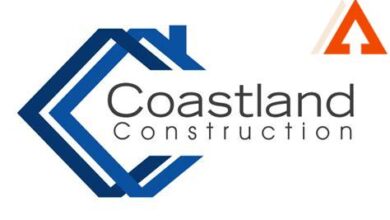Revolutionizing Retail: Innovative Store Construction Techniques
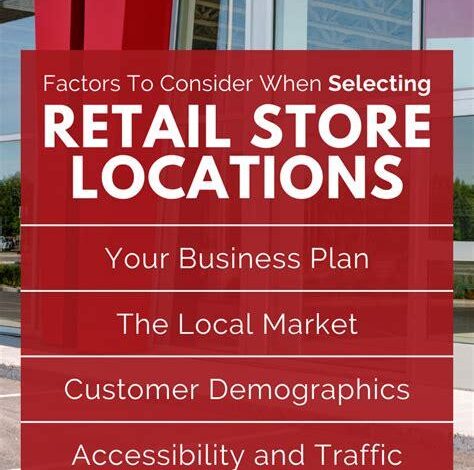
Kind Reader, retail store construction is a crucial aspect of the retail industry, as it directly impacts the success and profitability of a store. From selecting a location to designing the layout and installing fixtures, every aspect of retail store construction requires careful consideration and planning. The process involves a team of professionals, including architects, engineers, contractors, and designers, who work together to ensure that the store meets the needs of both the retailer and the customers. In this article, we will explore the various aspects of retail store construction, including the key factors that retailers need to consider when building their stores.
Factors to Consider in Retail Store Location

Choosing the right location for your retail store is critical to its success. Here are some factors to consider:
1. Demographics
Identify your potential customers’ age, gender, income, education, occupation, and lifestyle to determine the best location.
2. Competition
Study the competition in the area to see whether existing retail stores provide similar products.
3. Foot Traffic
Observe the area for how many people pass by and the frequency of passers-by to determine if your store is in a high-traffic area.
4. Accessibility and Visibility
Consider the convenience of parking and if your store is visible from the street.
5. Cost
Set a budget and look for a location where you can meet sales projections and have a good return on investment.
Design and Layout of a Retail Store
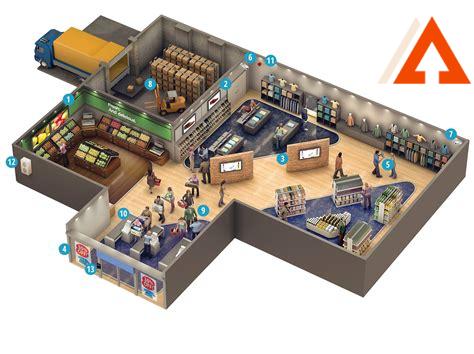
Design and layout are critical in maximizing sales potential in your retail store. Consider these factors:
1. Customer Flow
Organize retail fixtures in a way that creates a natural pathway for customers to explore the store.
2. Department Grouping
Putting related products together improve navigation for customers and makes their shopping experience easier.
3. Product Placement
Put your top-selling items in highly visible areas to catch the attention of customers and encourage them to make purchases.
4. Lighting and Color
Proper lighting and color schemes give your store character and help set the mood or atmosphere. Lighting enhancements can also be used to highlight specific products and designs.
5. Checkout Location
Place check-out locations in high-traffic areas to encourage additional purchases while customers wait.
Planning and Designing a Retail Store Construction
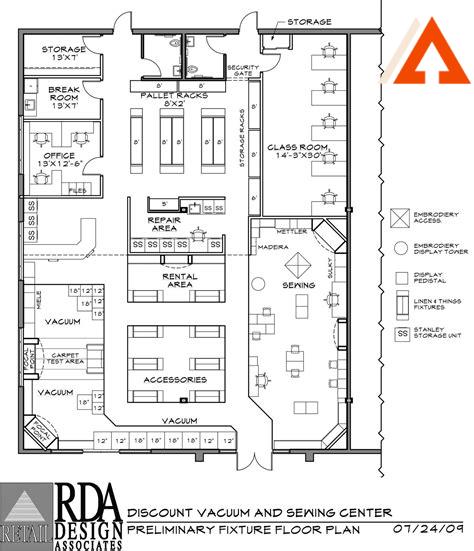
A successful retail store construction project always begins with thorough planning and designing. A well laid-out store can attract more customers and increase sales. Before getting started, retailers should conduct market research and identify the needs and preferences of their target audience. This information is crucial in determining the store’s layout, products, interior design, and overall look and feel. Retailers should also consider the location and size of the store, its accessibility, and utilities such as power, water, and sewage.
Store Layout Design
The layout of a retail store is one of the most important elements of its success. It should be designed to guide customers through the store and encourage them to make purchases. Factors to consider when designing a store layout include:
- The main entrance should be clearly visible and inviting, with signage and displays to attract customers.
- The layout should provide customers with enough space to move around the store and between displays, with clear aisles and pathways.
- The store’s products should be arranged in a logical and intuitive manner, with related items placed together.
- The checkout area should be easy to find and accessible, with enough space for customers to queue comfortably.
Interior Design and Merchandising
The interior design of a retail store should be visually appealing, comfortable, and in line with the brand’s identity and target audience. From wall color to flooring and lighting, every element should be aligned with the store’s objectives, products, and customer experience. Retailers should also consider how they will merchandise and display their products, as this can have a significant impact on sales. Some important tips to keep in mind when merchandising products are:
- Use signage and displays to draw attention to new or featured products.
- Use lighting to highlight products and create a welcoming atmosphere.
- Keep displays simple, neat, and organized, with plenty of space for customers to view products.
- Put higher-margin items at eye level or in prominent areas to encourage sales.
| No | Information |
|---|---|
| 1 | Retail store construction refers to the planning, design, and construction of physical retail stores. |
| 2 | It includes the construction of new stores as well as the renovation and expansion of existing stores. |
| 3 | Factors to consider in retail store construction include location, space requirements, zoning and building codes, and budget. |
| 4 | Retail store design includes aspects such as layout, lighting, flooring, fixtures, and color scheme. |
| 5 | Retail construction companies offer a range of services including design, general contracting, project management, and construction. |
| 6 | Key considerations for successful retail store construction include efficient use of space, customer experience, and creating a strong brand identity. |
Choosing the Right Materials for Retail Store Construction

Choosing the right materials for retail store construction is crucial to ensure the durability, safety, and aesthetic of the building. The materials used should be able to withstand weather changes, high traffic, and potential damage from accidents or natural disasters. For an eco-friendly approach, materials that are renewable, recyclable, or biodegradable should be considered. Here are some commonly used materials for retail store construction:
1. Concrete
Concrete is a popular choice for retail store construction due to its durability and fire resistance properties. It is also a cost-effective option and provides a modern look for the store’s exterior.
2. Steel
Steel is known for its strength and versatility, making it ideal for large retail store constructions. It is also a sustainable option since most steel materials are recyclable. However, it is less commonly used in retail store construction due to its higher cost.
3. Wood
Wood provides a natural look and warmth to retail stores, making it a popular choice for smaller retail stores. However, it requires regular maintenance to ensure its durability and resistance to pests and rotting. Additionally, some wood materials are not environmentally friendly.
4. Glass
Glass is mainly used for retail store windows and doors to provide a clear view of the store’s interior and attract customers. It is also energy-efficient since it allows natural light to enter the store, reducing the need for artificial lighting during the day.
Maximizing Space for Retail Store Construction

Maximizing space is a crucial aspect of retail store construction that can affect the store’s flow, merchandising, and customer experience. It is essential to create a balance between ample space, aesthetics, and functionality. Here are some ways to maximize space for retail store construction:
1. Floor Plan Design
The floor plan design should be strategically planned to avoid clutter and maximize the store’s layout. Consider the traffic flow, placement of merchandise, and aisles’ width to provide customers with an effortless and visually pleasing experience.
2. Vertical Storage
Vertical storage utilizes the store’s vertical space and is ideal for small retail stores. It is also an effective way to showcase merchandise and attract customers.
3. Wall-Mounted Displays
Wall-mounted displays can help maximize floor space and provide an aesthetically pleasing showcase for merchandise. It is also versatile and can be creatively designed to fit the store’s brand and theme.
4. Mirrors and Lighting
Mirrors and lighting techniques can create an illusion of a larger retail space and enhance the store’s ambiance. Mirrors can create depth, and lighting can provide a warm and inviting atmosphere for customers.
Retail Store Construction: Planning and Design
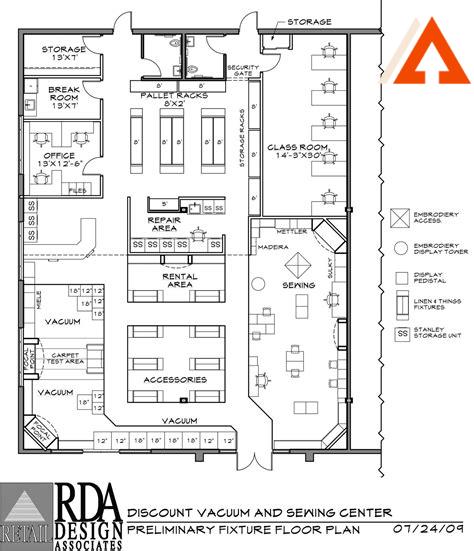
Planning and designing your retail store are crucial in achieving your business goals. The visual appeal and functionality of your store can significantly impact customer experience and satisfaction. While planning and designing your retail store, it is essential to consider the following factors:
Location
Choosing the right location is vital for your store’s success. Consider factors such as accessibility, visibility, and foot traffic when choosing your store’s location. You should also consider the cost of rent or purchase in the chosen area and ensure it fits within your budget.
Store Layout
The store layout should be optimized to create a visually appealing and functional space. The layout will also impact customer experience. It influences how customers perceive the store, how long they are willing to stay, and how much they will spend. A good store layout should factor in product placement, traffic flow, and customer behavior.
Visual Merchandising
Visual merchandising is attracting customers with visually appealing displays. It includes different aesthetics and themes that convey the store’s message. Visual merchandising displays should be designed to create a space that appeals to customers and showcases products in an aesthetically pleasing manner.
Lighting
Lighting plays a crucial role in retail store design. Correct lighting techniques can help create ambiance, highlight specific products, and create drama in your store. It is essential to ensure that your store’s lighting is appropriate for your brand and merchandise.
| No | Retail Store Construction Planning and Design Tips |
|---|---|
| 1 | Conduct research on your target customer and design your store according to their preferences. |
| 2 | Use a mix of lighting sources to create a pleasing and functional ambiance. |
| 3 | Consider the cost of rent or purchase when choosing your store location. |
| 4 | Use appropriate visual merchandising techniques to attract customers and convey your store’s message. |
A visually pleasing and functional store layout, appropriate lighting, and effective visual merchandising displays are essential for retail store success.
Store Signage
Store signage is an essential aspect of retail store design. It should be designed to attract attention, promote brand awareness, and communicate information about the store. Whether it is an exterior sign, wall sign, or window graphics, store signage should be attention-grabbing and easy to read.
Display Fixtures and Fittings
The choice of display fixtures and fittings can significantly impact customer experience. They set the tone and ambiance of the store. Choose fixtures and fittings that complement your store’s design aesthetic, product palette, and brand identity. You can also try novelty fittings to add an element of surprise and delight for customers.
Designing a Retail Store Layout

The design of a retail store layout is crucial in enticing customers and encouraging sales. The layout should be organized in a way that makes it easy for customers to navigate, find what they’re looking for, and ultimately make a purchase. The layout should also reflect the branding of the store and create a cohesive and aesthetically pleasing atmosphere. Here are some considerations:
Wall and Floor Plan
The wall plan includes the locations of shelves, fixtures, and merchandise displays on the walls of the store. The floor plan shows how the merchandise and fixtures are arranged on the sales floor. Both these plans must ensure adequate space between fixtures and can affect traffic flow and overall ambiance.
Lighting
Lighting can set the mood of the store and highlight specific products and displays. It is essential to balance lighting with energy efficiency and sustainability, as well as compliance with local building codes.
Checkout Area
The checkout area should be conveniently located and accessible to customers while not impeding traffic flow. The checkout area can also create upsell opportunities by displaying small items to grab customers’ attention while they wait in line.
Merchandise Displays
The merchandise displays should be eye-catching and highlight the store’s featured products. It is also essential to consider the placement of complementary products and to group them together for cross-selling. The location of displays should make sense to customers and encourage them to explore the entire store.
Customer Experience
The store’s layout and design should provide an enjoyable and memorable experience for the customer. The atmosphere and ambiance should reflect the brand and the customer’s lifestyle, such as music, scent, and decorations. Individual areas like coves, sitting areas, or mirrors can also create a sense of exclusivity and encourage customer engagement.
Security and Safety
Security and safety should always be considered in the retail store layout. It is essential to ensure that merchandise on the sales floor can be monitored without compromising traffic flow, and display fixtures should be sturdy and secure.
Technology Integration
The retail store design should consider integrating technology to provide customers with an omnichannel experience. The use of digital displays, in-store analytics, and mobile devices can enhance the customer’s shopping experience and provide valuable data for the retailer.
| No | Retail Store Layout Do’s and Don’ts |
|---|---|
| 1 | Do create clear pathways and avoid creating dead-ends or cluttered areas. |
| 2 | Do place your best-selling products at eye level to maximize customer exposure. |
| 3 | Do embrace color schemes that reflect your brand while also creating a welcoming and energizing atmosphere. |
| 4 | Don’t overlook the importance of lighting. Insufficient lighting can lead to a poor customer experience and merchandising issues. |
| 5 | Don’t forget to allocate enough space for people to walk around comfortably. |
| 6 | Don’t neglect the checkout area, as it is a prime spot for impulse buying. |
Optimizing Efficiency in Retail Store Construction

Efficiency is key in retail store construction to ensure that the project is completed on time and within budget. Here are some ways to optimize efficiency in retail store construction:
Utilizing Technology
The use of technology during retail store construction can aid in achieving a quicker and more efficient construction process. This can include the use of Building Information Modeling (BIM) software, which allows a more in-depth understanding of the construction process that can result in effective time and budget management. The use of drones can assist with surveying and site inspection that can avoid potential delays and mistakes. Other technologies such as mobile devices, project management software, and virtual reality can also be utilized to streamline the construction process.
Choosing the Right Contractor
When it comes to retail store construction, it’s important to choose a contractor that fits your specific needs. Look for a company with experience in retail store construction and a good track record for completing projects on time and within budget. Make sure to also check their reviews and references. Choosing the right contractor can make all the difference in achieving the most efficient construction process possible.
Lighting Design

A good lighting design makes a significant impact on the retail store experience and overall ambiance. Lighting should not only promote visibility and enhance the visual appeal of the products, but also create a welcoming and comfortable environment for shoppers.
Importance of Lighting Design
Lighting design influences customers’ mood and purchasing behavior. The right lighting design can aid customers in decision-making by highlighting specific areas or products, creating focus, and increasing the perceived value of merchandise. Poor lighting can result in merchandise appearing less attractive, deterring customer interaction, and not portraying an inviting and energetic brand.
Types of Lighting
Retail stores generally use three types of lighting – ambient, accent, and task lighting. Ambient lighting sets the tone of the store and affects customers’ first impressions. Accent lighting highlights specific products or specific areas. Task lighting aids in staff’s practical tasks and directs customers’ attention. A combination of these types is used to create a cohesive environment specific to the brand and merchandise sold.
Interior Design

Interior design plays a vital role in the development of a retail store. It is an essential aspect of branding, as it is the physical representation of the brand and its ideals. A well designed retail store can boost sales, increase brand loyalty, and make the shopping experience more engaging and enjoyable for customers.
Key Elements of Interior Design
The key elements of interior design include color palettes, lighting design, store layout, signage, furniture, and décor. These elements are carefully considered and designed according to the brand’s strategy and customer needs.
The Role of Professional Interior Designers
Hiring a professional interior designer can be an investment in the long-term success of the retail store. They have the knowledge and experience to create a space that meets customer needs and reflects the brand’s values. Additionally, they can provide guidance throughout the approval process and meet the legal standards required for construction, placement, and compliance with local and federal regulations.
Retail Store Construction FAQ
1. What is retail store construction?
Retail store construction is the process of building or improving a physical store location for retail businesses.
2. What are some common concerns during retail store construction?
Some common concerns during retail store construction include cost, timeline, design, permits, and compliance with building codes.
3. How long does it typically take to construct a retail store?
The timeline for retail store construction depends on the scope of the project, but it can take anywhere from a few weeks to several months.
4. What kind of permits do I need for retail store construction?
Permits needed for retail store construction can vary by state and municipality, but typically include building permits, electrical permits, and plumbing permits.
5. How can I ensure that my retail store construction project stays within budget?
One way to ensure that your retail store construction project stays within budget is to have a detailed project plan and to work closely with your contractor throughout the process.
6. What are some design considerations for retail store construction?
Design considerations for retail store construction include branding, layout, lighting, signage, and color schemes.
7. How can I make my retail store accessible to customers with disabilities?
You can make your retail store accessible to customers with disabilities by including features such as wheelchair ramps, handrails, wider aisles, and accessible entrances.
8. What kind of flooring is best for a retail store?
The best flooring for a retail store depends on the type of business, but popular options include carpet, hardwood, vinyl, and tile.
9. How can I ensure that my retail store is energy-efficient?
You can ensure that your retail store is energy-efficient by installing energy-efficient lighting and HVAC systems, using energy-efficient appliances, and insulating your building properly.
10. What should I consider when choosing a retail store location?
When choosing a retail store location, you should consider factors such as demographics, foot traffic, accessibility, and competition.
11. What kind of insurance do I need for my retail store?
You typically need property insurance, liability insurance, and workers’ compensation insurance for your retail store.
12. How can I make my retail store stand out?
You can make your retail store stand out by creating a unique brand and atmosphere, providing excellent customer service, and offering promotions and special events.
13. What should I look for in a retail store contractor?
You should look for a retail store contractor who is experienced, licensed and insured, and has good references and reviews.
14. What are some common mistakes to avoid during retail store construction?
Common mistakes to avoid during retail store construction include not having a clear project plan, not hiring the right contractor, and not sticking to a budget.
15. What kind of lighting is best for a retail store?
The best lighting for a retail store depends on the type of business, but popular options include fluorescent, LED, and halogen lighting.
16. Can I make changes to my retail store design during construction?
You can make changes to your retail store design during construction, but it may result in additional costs and delays to the project.
17. How can I ensure that my retail store is compliant with building codes?
You can ensure that your retail store is compliant with building codes by working closely with your contractor and obtaining the necessary permits and inspections.
18. What kind of signage should I use for my retail store?
The signage you use for your retail store should be easy to read, reflect your branding, and be visible from a distance.
19. Can I use sustainable materials for my retail store construction?
Yes, you can use sustainable materials for your retail store construction, such as bamboo flooring, recycled insulation, and low-VOC paint.
20. What are some cost-saving tips for retail store construction?
Some cost-saving tips for retail store construction include hiring a local contractor, using pre-fabricated components, and repurposing existing materials.
21. What kind of security measures should I have in my retail store?
You should have security measures such as alarms, cameras, and secure entrances and exits in your retail store.
22. What kind of technology should I use in my retail store?
The technology you use in your retail store depends on the type of business, but popular options include point-of-sale systems, customer relationship management software, and digital signage.
23. Can I hire an architect for my retail store construction?
Yes, you can hire an architect for your retail store construction, but it may result in additional costs to the project.
24. What kind of flooring is best for high-traffic retail areas?
The best flooring for high-traffic retail areas includes concrete, carpet tiles, and luxury vinyl tile.
25. How can I promote my retail store during construction?
You can promote your retail store during construction by creating anticipation through social media, offering sneak peeks to customers, and hosting events on-site.
Looking to build a new retail store? Check out retail store construction for tips and insights on bringing your vision to life.
Farewell for Now, Kind Reader
We hope you enjoyed learning about the world of retail store construction and how it has evolved over time to adapt to changing consumer needs. Whether it’s new technology, innovative design, or sustainable building practices, the retail industry is constantly evolving and pushing the limits to create a shopping experience that is both enjoyable and efficient. We encourage you to keep up with our future articles and discussions on this fascinating industry and thank you for taking the time to join us today. Until next time, happy shopping!


